
Kuhl's pipistrelle is a species of vesper bat that occurs in large areas of North Africa, Southern Europe and West Asia. It lives in temperate forests, subtropical or tropical dry shrubland, Mediterranean-type shrubby vegetation, temperate grassland, rural gardens, and urban areas. It is a rare and infrequent visitor to Britain, usually only detected by sound-recordings.
The Namib long-eared bat is a species of vesper bat in the family Vespertilionidae found in Namibia. It is found in these habitats: dry savanna and temperate desert.
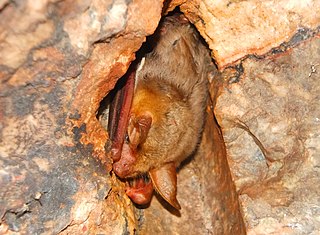
The Felten's myotis is a species of vesper bat.
The Caucasian snow vole is a species of rodent in the family Cricetidae.
Robert's snow vole is a species of rodent in the family Cricetidae. It is found in Azerbaijan, Georgia, the Russian Federation, and Turkey. Its natural habitats are temperate forests and temperate grassland.
Dacrydium lycopodioides is a species of conifer in the family Podocarpaceae. It is found only in New Caledonia. It is threatened by habitat loss.
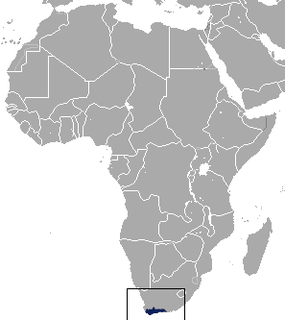
The fynbos golden mole is a species of mammal in the golden mole family, Chrysochloridae. It is endemic to South Africa.

The Hottentot golden mole is a species of mammal in the golden mole family, Chrysochloridae. It is found in South Africa, Eswatini, and possibly Lesotho. Its natural habitats are temperate forests, subtropical or tropical dry forest, subtropical or tropical moist lowland forest, dry savanna, moist savanna, subtropical or tropical dry shrubland, Mediterranean-type shrubby vegetation, temperate grassland, subtropical or tropical dry lowland grassland, subtropical or tropical high-altitude grassland, sandy shores, arable land, pastureland, plantations, rural gardens, urban areas, and introduced vegetation.

The robust golden mole is a species of mammal in the golden mole family, Chrysochloridae. It is endemic to South Africa. Its natural habitats are temperate forests, subtropical or tropical moist lowland forest, temperate shrubland, subtropical or tropical dry shrubland, temperate grassland, subtropical or tropical dry lowland grassland, arable land, pastureland, plantations, rural gardens, urban areas, and introduced vegetation. It is threatened by habitat loss.
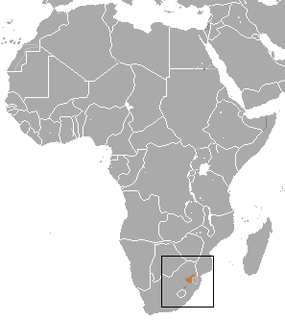
The highveld golden mole is a species of mammal in the golden mole family, Chrysochloridae. It is found in South Africa and Eswatini. Its natural habitats are temperate forests, subtropical or tropical dry forest, subtropical or tropical moist lowland forest, subtropical or tropical moist montane forest, moist savanna, temperate shrubland, temperate grassland, subtropical or tropical dry lowland grassland, arable land, pastureland, plantations, rural gardens, urban areas, and introduced vegetation. It is threatened by habitat loss.

The Cretan shrew is a species of mammal in the family Soricidae. It is endemic and exclusive to the island of Crete, Greece. Its natural habitat is temperate shrubland, and the animal is threatened by habitat loss. It is found in the mountainous highlands of Crete, having been displaced from lower altitudes by the lesser white-toothed shrew.

The Japanese mountain mole is a species of Old World mole in the family Talpidae. It is endemic to Japan. It is the only member of the monotypic genus Oreoscaptor. Its natural habitats are temperate forests and temperate grassland.
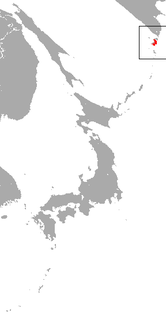
The Paramushir shrew is a species of mammal in the family Soricidae. It is endemic to Russia. Its natural habitat is temperate forests. It is threatened by habitat loss.
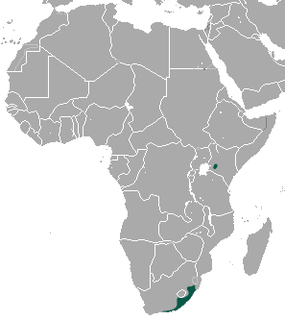
The least dwarf shrew is a species of mammal in the family Soricidae. It is found in Cameroon, Central African Republic, Democratic Republic of the Congo, Kenya, Nigeria, South Africa, Eswatini, Tanzania, and Uganda. Its natural habitats are subtropical or tropical moist lowland forest, subtropical or tropical moist montane forest, temperate grassland, subtropical or tropical dry lowland grassland, subtropical or tropical high-altitude grassland, and arable land.

The Chinese shrew mole is a species of mammal in the family Talpidae. It is endemic to China, Sichuan Province. Its natural habitat is temperate forests.

The little Japanese horseshoe bat is a species of bat in the family Rhinolophidae. It is found in Japan and possibly China. Its natural habitat is temperate forests. It is threatened by habitat loss. It has not yet been assessed for the IUCN Red List.
Renauldia lycopodioides is a species of moss in the family Pterobryaceae. It is endemic to Tanzania, where it is known from only two locations and is considered an endangered species. It grows on tree branches in forested habitat. It is threatened by deforestation.
Chevreulia is a genus of plants in the family Asteraceae, described as a genus in 1817.
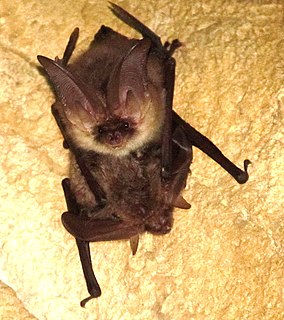
Ognev's long-eared bat is a species of bat found in Asia. By 2006, it was recognized as a separate species from the P. auritus species complex.
The Turkmen long-eared bat is a species of bat in the family Vespertilionidae. It is found in Kazakhstan, Uzbekistan and Turkmenistan, and possibly Mongolia.













